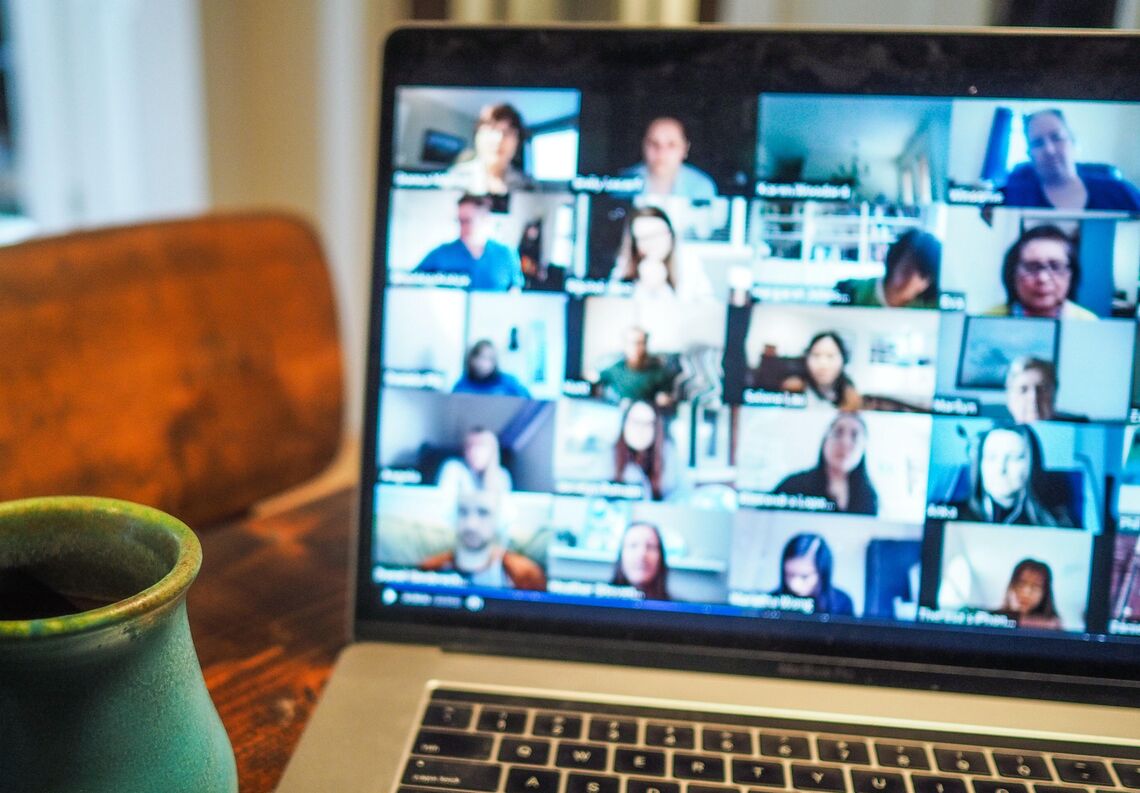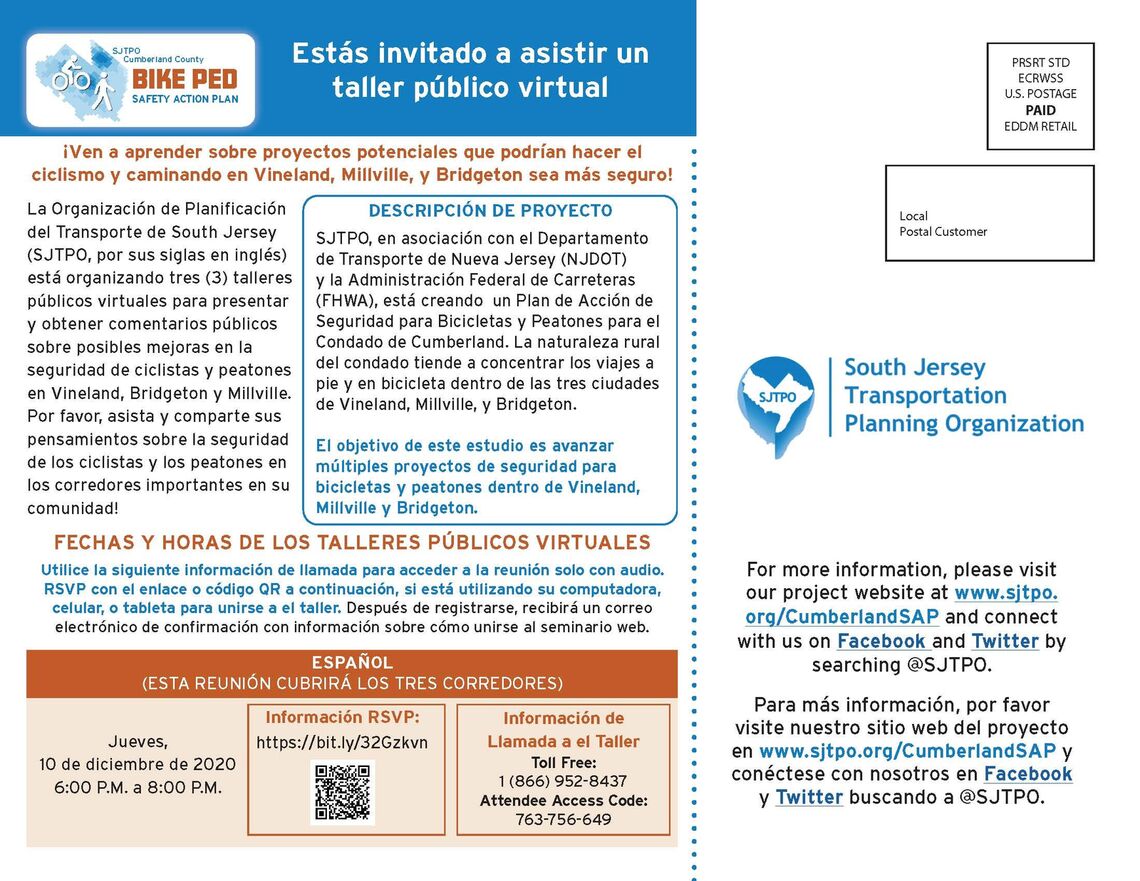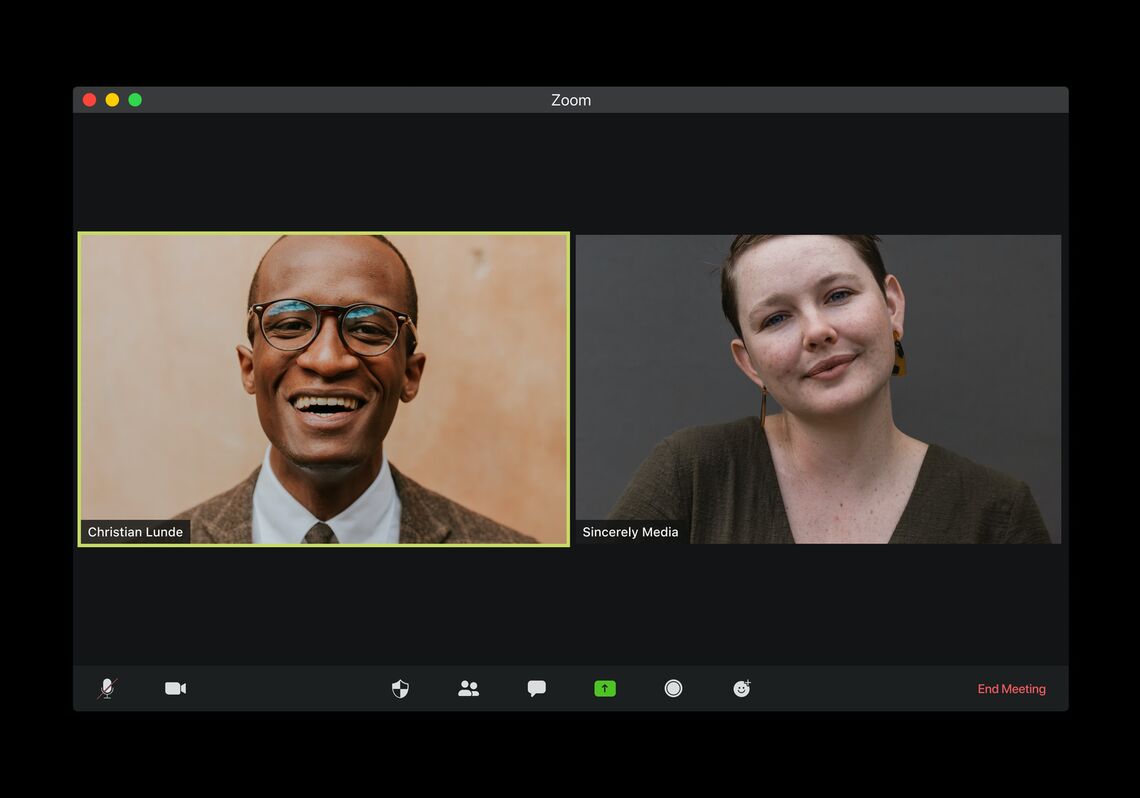Daniel Hutton is a planner who works out of Urban’s Cherry Hill office and provides service to clients throughout the Mid-Atlantic and New England. He has a background in policy and views his projects as discernible methods to affect change in built environments and provide positive improvements for communities. Along with transportation and land use planning, Daniel is also skilled at public outreach efforts in both English and Spanish.
Virtual public involvement has become key to convey project information to stakeholders, facilitate engagement, and gather feedback in our modern times. We talked to Dan about how public agencies and consultants can host successful meetings virtually, and where public involvement is heading in the future:
Q: What important steps must be taken to plan a successful virtual public meeting?
A: Many people think that virtual public meetings are nothing more than sending out a link to a Zoom call. In reality, effective virtual public meetings are carefully organized and tailored to fit the geographic area, client, and project to which they correspond. Often, the first step is taking inventory of existing lines of communication between the client and the project’s stakeholders. It is important to determine which methods are most effective and equitable to reach the stakeholders virtually. Depending on the area, there may be many households that lack internet availability or are not accustomed to using computers.
Gathering this information and providing the client with a clear understanding of how different approaches will work or not work is vital to a public involvement effort’s success. With this information, the correct approach, tools, and techniques can be used to plan a successful virtual public meeting.
virtual meeting

Q: What are some of the benefits of virtual public involvement compared to in person?
A: Virtual public involvement has been encouraged by public engagement experts for years. Before COVID, experts saw the great opportunity that virtual involvement provided not only in terms of cost and time savings but more importantly, turnout. As many have come to realize this past year, virtual events are more flexible and accessible than traditional in-person events.
The traditional in-person meeting format has inherent barriers that prevent many in society from attending, and thus, skew project feedback and input to over-represent certain demographics. Working families, single-parent households, people who work second-shift jobs or multiple jobs, and folks with no way of getting to the meeting are not able to attend the traditional weekday public meetings from 5:00 PM – 7:00 PM.
On the other hand, virtual public involvement allows folks to attend meetings, provide input, and learn about projects from wherever they are. In effect, this approach is opposite the traditional. The Federal Highway Administration reports that meeting the public where they are with virtual methods – like virtual meetings, project websites, online surveys, and so on – has shown to outperform traditional methods while saving between 10%-15% of the cost.
Q: What tools are needed to conduct virtual public involvement?
A: Typically, virtual public involvement efforts include a project website or webpage where all information can be housed. Once developed, tools such as interactive maps, short videos, 3D visualizations, surveys can be embedded into the project website.
It is critical to identify community characteristics that may influence the success of virtual public involvement. Whether it be communities where English is not commonly spoken or ones suffering from society’s digital divide, the tools required to conduct virtual public involvement must equitably accommodate the specific needs of the intended audience. When working on the South Jersey Transportation Planning Organization’s Cumberland County Bike-Ped project, we physically mailed out 10,000 meeting invitations in English and Spanish to households along the projects’ corridors. These invitations included meeting options for folks with and without internet access by providing call-in numbers and locations to pick up additional project information or fill out comment cards.
The list of tools that can be utilized for public involvement is ever growing. The challenge is not finding tools to use, but rather, determining the right ones to use that match your project’s goals, context, allotted timeline, and budget.
mailer spanish page 2

Q: Have communities embraced the use of virtual meetings?
A: Depending on the region and state, there may be more familiarity with this method of communication. COVID has undoubtedly forced many communities to embrace the use of virtual meetings more than they would have otherwise. However, many of these communities are now planning to incorporate virtual meetings into their toolbox for the future now that they are familiar with it. There remain communities throughout the country, though, where they do not see this as a feasible or useful effort.
Our job as consultants is to inform our clients and provide them with the information and tools to make the determinations that they feel are most appropriate. In some cases, virtual public meetings may not be the correct approach.
Q: What challenges do public agencies face in conducting virtual public involvement?
A: For much of 2020, the biggest challenge was complying with the ever-evolving state, local, and federal guidelines. In addition, state laws and IT policies restricting the use of certain software and virtual public meetings altogether limited many public agencies from hosting a meeting. Governors’ Executive Orders and agency policies have now since addressed these limitations.
The challenge that remains is determining which software the agencies want to continue using and what guidance they want to stick to moving forward. Everyone is looking for success stories and lessons learned to determine their future policies.
Q: Have you seen an increase in public participation since virtual involvement tools have been utilized?
A: There has been an increase in public participation along with the rise in virtual involvement tools. I conducted a meeting in an area where participation is historically low and was pleasantly surprised to see a virtual turnout of around 40 people. This has largely been the case for many of the meetings our firm is involved with. Overall, clients are pleased by the flexibility, turnout, and feedback received using virtual public involvement tools and techniques. I fully expect this method of engagement to be commonplace.
Q: How can consultants help public agencies prepare for virtual public meetings?
A: Consultants can provide their experiences and lessons learned. For example, I have experience using various software and methods to conduct public outreach in different regions and states. Each meeting is a learning experience. Providing a public agency with this knowledge gained is the best way for a consultant to add value.
Q: What were some early mistakes made in virtual public meetings? How have things improved?
A: Unfortunately, virtual public meetings were initially susceptible to disruption. When people are free to comment in a somewhat anonymous environment, there are opportunities to disrupt the objective or make distasteful comments. That is why it is important to have someone who knows virtual public involvement software involved in the meeting planning and preparation. We know now what precautions can be taken to prevent unwanted intrusions.
Other common mistakes are a slow internet connection, poor audio, lack of coordination or meeting preparation, wrong use of meeting software, and no accommodations for attendees who call in to the meeting. All of these challenges can be met through proper experience and preparation.
virtual public meeting 2

Q: Tracking attendees and obtaining stakeholder contact information is an important part of public involvement. How can this information be obtained virtually?
A: Over the past year, Urban has invested in software dedicated to virtual public involvement. Using different tools and techniques – such as interactive polling and surveys – we can not only obtain stakeholder input, but also have productive conversations that address the feedback received in real-time.
There are a lot of really fun and innovative technologies out there that provide other niche engagement activities. Understanding how and when to use them – whether it be a project website or interactive software – is vital to providing the best services to our clients.
Q: What is the future for virtual public involvement? Is there value in them when meetings can be held in person?
A: The future of virtual public involvement is further incorporation of 21st technologies - like social media, smartphones, IoT, digital ads, software programs, 3D visualizations, and VR technology – into the project delivery process. We are already seeing more and more of this throughout the country. The future is twofold: a change in philosophy of meeting people where they choose to virtually or in-person interact with their friends and family, and incorporating the best communication tools available.
Virtual public meetings and in-person meetings are not mutually exclusive. Each method of communication and engagement has its role to play in the process. It is the job of public involvement experts to tailor the public involvement approach and use of tools and techniques to fit the context of the project. I anticipate the appropriate approach being a mixture of both in-person and virtual.
Contact Daniel Hutton: drhutton@urbanengineers.com